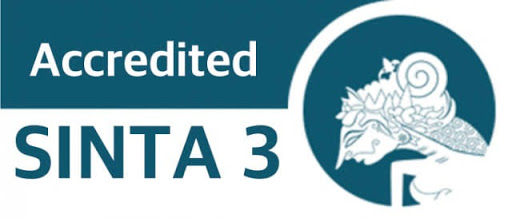Peran Religiusitas dan Kecerdasan Emosional terhadap Resiliensi Penyintas Tsunami Selat Sunda
DOI:
https://doi.org/10.15575/jpib.v4i2.9476Keywords:
religiosity, emotional intelligence, Islamic values, tsunami survivorsAbstract
This study aims to examine the influence of religiosity and emotional intelligence on resilience of tsunami survivors in the Selat Sunda that occurred on December 22, 2018. This study used a quantitative correlational approach. Using accidental sampling technique, the participants were 62 tsunami survivors of Selat Sunda in Pandeglang, age ranged between 20-65 years, lost their homes, livelihoods, death of family/relatives or experienced physical illness/disability. This study used 3 instruments, including: The Centrality of Religiosity Scale (CRS), Goleman emotional intelligence measuring instrument, and Connor Davidson Resilience Scale (CD-RISC). The results showed that religiosity and emotional intelligence had a simultaneous effect on resilience with a percentage of 17. Partially, religiosity had no significant effect on resilience to tsunami survivors in the Selat Sunda in Pandeglang.
References
Amirullah. (2015). Populasi dan sampel. Bayumedia Publishing.
Ananta, Y. (2018, December 26). Terungkap! Ini penyebab tsunami Selat Sunda. CNBC Indonesia. https://www.cnbcindonesia.com/news/20181226142352-4-48009/terungkap-ini-penyebab-tsunami-selat-sunda
Anwar, S., Winarna, A., & Suharto, P. (2020). Strategi pemberdayaan wilayah pesisir dalam menghadapi bencana tsunami serta implikasinya terhadap ketahanan wilayah (Studi di desa Bulakan, kecamatan Cinangka, kabupaten Serang, Banten). Jurnal Ketahanan Nasional, 26(1), 108-131. https://doi.org/10.22146/jkn.52823
Anwaruddin, H. (2017). Dukungan sosial dan kecerdasan emosional dengan resiliensi korban banjir. Persona, Jurnal Psikologi Indonesia. 6(1), 21. http://dx.doi.org/10.30996/persona.v6i1.1627
Bonanno, G. A., Galea, S., Bucciarelli,A., & Vlahov, D. (2007). What predicts psychological resilience after disaster? The role of demographics, resources, and life stress. Journal of Consulting and Clinical Psychology, l75(5), 671-682. https://doi.org/10.1037/0022-006X.75.5.671
Budi, S., & Mutia, S. (2017). Tingkat resiliensi masyarakat di area rawan bencana. Idea Nursing Journal. 8(2), 30-34. https://doi.org/10.52199/inj.v8i2.8818
Connor, K. M., & Davidson, J. R. T. (2003). Development of a new resilience scale: The connor-davidson resilience scale (CD-RISC). Depression and Anxiety,18(2), 76-82. http://dx.doi.org/10.1002/da.10113
Fauziya, L. I., & Daulima, N. H. C. (2017). Hubungan kecerdasan emosi dengan resiliensi penyintas banjir. Jurnal Keperawatan Indonesia, 20(3), 148–157. https://doi.org/10.7454/jki.v20i3.624
Florentin, V. (2019, January 3). BNPB: 429 Korban Tewas Tsunami Selat Sunda Sudah Teridentifikasi. Tempo. https://nasional.tempo.co/read/1161045/bnpb-429-korban-tewas-tsunami-selat-sunda-sudah-teridentifikasi
Gardner, H. (1993). Multiple intelligences: The theory in practice. Basics Book.
Goleman, D. (1999). Working with emotional intelligence: Kecerdasan emosi untuk mencapai puncak prestasi. PT.Gramedia Pustaka Utama.
Goleman, D. (2003). Kecerdasan emosi untuk mencapai puncak prestasi (Cetakan 2). PT Gramedia Pustaka Utama.
Gusniawati, M. (2015). Pengaruh kecerdasan emosional dan minat belajar terhadap penguasaan konsep matematika siswa SMAN di kecamatan Kebon Jeruk. Formatif: Jurnal Ilmiah dan Pendidikan MIPA, 5(1), 26-41. http://dx.doi.org/10.30998/formatif.v5i1.165
Grotberg, E. (1995). A guide to promoting resilience in children: Strengthening the human spirit. The Hague: Benard Van Leer Foundation.
Huber, S., & Huber. O. W. (2012). The centrality of religiosity scale. Religions, 3, 710-724. http://d x.doi.org/10.3390/rel3030710
Ibrahim, M. M. (2012). Pengembangan instrumen pengukur kecerdasan emosional siswa berbakat intelektual. Jurnal Evaluasi Pendidikan, 3(2), 173-187. https://doi.org/10.21009/jep.032.06
Jannah, S. N., & Rohmatun, R. (2018). Hubungan antara dukungan sosial dengan resiliensi pada penyintas banjir Rob Tamak Lombok. Jurnal Psikologi Proyeksi, 13(1), 1-12. http://dx.doi.org/10.30659/jp.13.1.1-12
Kementerian Agama Kabupaten Banten (2019). https://ditpdpontren.kemenag.go.id/pdpp/statistik?id=36
Kim-Cohen, J. (2007). Resilience and developmental psychopathology. Child and Adolescent
Psychiatric Clinics of North America, 16, 271-283. https://doi.org/10.1016/j.chc.2006.11.003
Rahman, M. P. N. (2018). Hubungan religiusitas dengan resiliensi pada survivor kanker payudara (Skipsi tidak diterbitkan). UIN Sunan Gunung Djati Bandung, Fakultas Psikologi.
Nurromdhoni, Z. (2018). Gambaran the centrality of religiosity anggota islamic studies and economic group (ISEG) UNPAD periode 2016-2017 (Skripsi tidak diterbitkan). Universitas Padjadjaran, Fakultas Psikologi.
Rahmasari, L. (2012). Pengaruh kecerdasan intelektual, kecerdasan emosi dan kecerdasan spiritual terhadap kinerja karyawan. Majalah Ilmiah INFORMATiKA,. 3(1), 1-3.
Reivich, K., & Shatte, A. (2002). The resilience factor. Broadway Books.
Royhatudin, A. (2018). Penguatan nilai-nilai pendidikan islam di sekolah dasar MALNU Pusat Menes. Jurnal Pendidikan Agama Islam, 15(2), 184-198. https://doi.org/10.14421/jpai.2018.152-06
Sasmita, N. O., & Afriyenti, L. U. (2019). Resiliensi pasca bencana tsunami. INSAN: Jurnal Psikologi dan Kesehatan Mental, 4(2), 94-101. https://doi.org/10.20473/jpkm.v4i22019.94-101
Setiawan. A., & Pratitis, N. T. (2015). Religiusitas, dukungan sosial dan resiliensi korban lumpur lapindo Siduarjo. Persona, Jurnal Psikologi Indonesia, 4(2), 137-144. http://dx.doi.org/10.30996/persona.v4i02.555
Sugiyono. (2018). Metode penelitian kuantitatif, kualitatif, dan R&D. Alfabeta
Undang-Undang Republik Indonesia Nomor 24 Tahun 2007 tentang Penanggulangan Bencana.
Utami, R., & Pratiwi, M. M. S. (2011). Tingkat depresi pada narapidana wanita: Studi deskriptif pada narapidana lapas kelas II A Semarang. Asvattha: Journal of Psychology, 4(1), 40-47.
Wagnild, G. (2009). A review of the resilience scale. Journal of Nursing Measurement. 17(2), 105-113. https://doi.org/10.1891/1061-3749.17.2.105.
Downloads
Published
Issue
Section
Citation Check
License
Authors who publish with this journal agree to the following terms:
- Authors retain copyright and grant the journal right of first publication with the work simultaneously licensed under a Creative Commons Attribution License that allows others to share the work with an acknowledgment of the work's authorship and initial publication in this journal.
- Authors are able to enter into separate, additional contractual arrangements for the non-exclusive distribution of the journal's published version of the work (e.g., post it to an institutional repository or publish it in a book), with an acknowledgment of its initial publication in this journal.
- Authors are permitted and encouraged to post their work online (e.g., in institutional repositories or on their website) prior to and during the submission process, as it can lead to productive exchanges, as well as earlier and greater citation of published work (See The Effect of Open Access).






